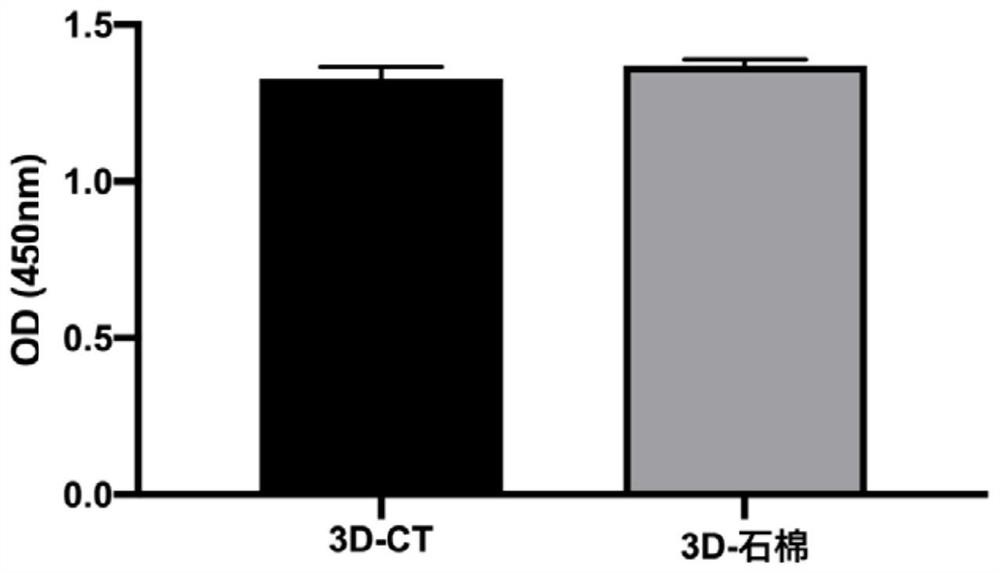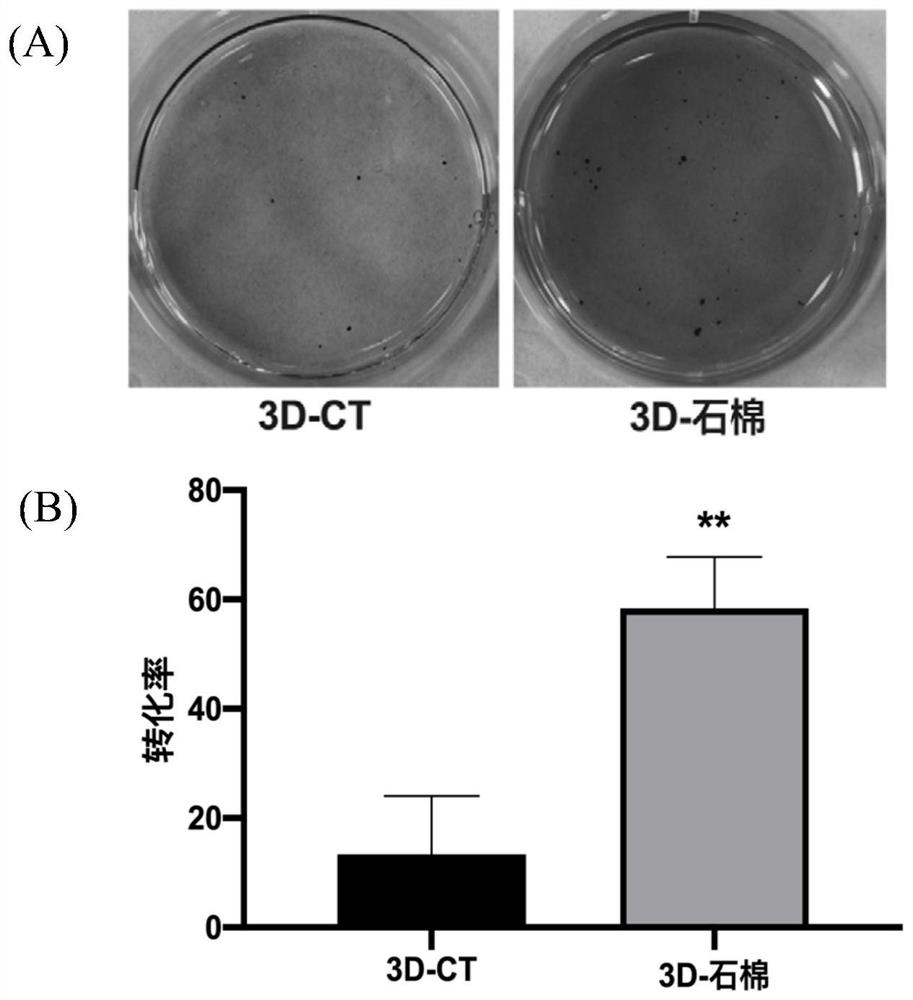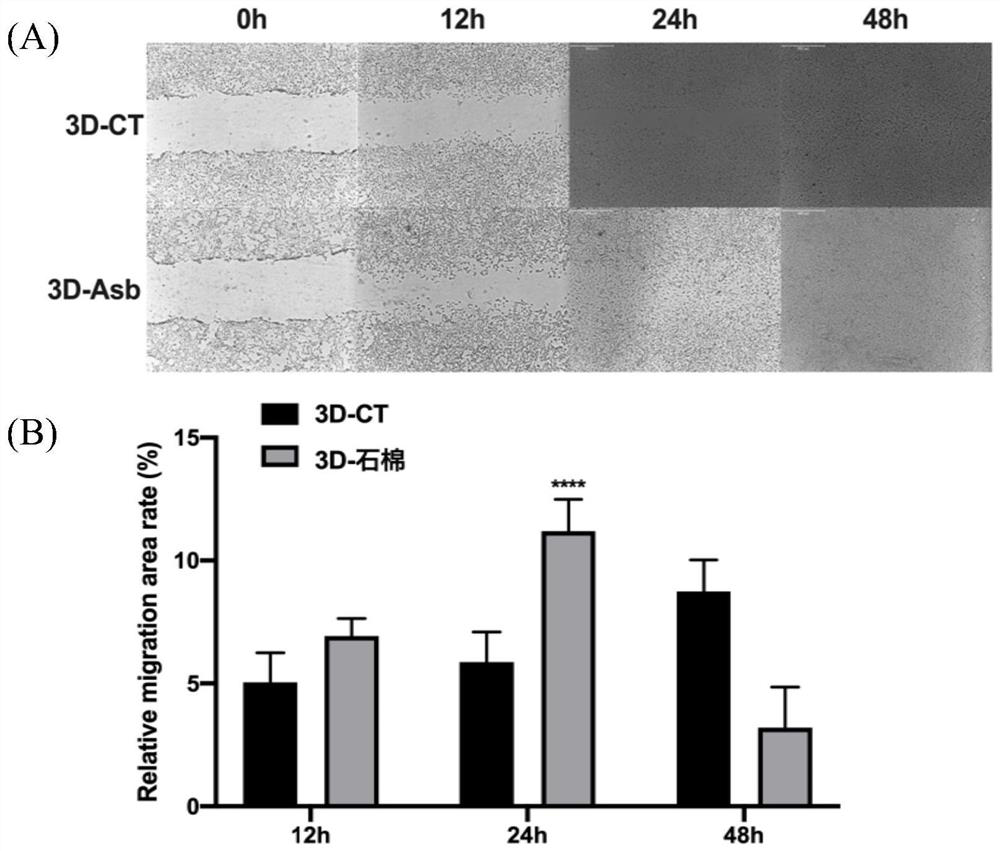Mouse embryo fibroblast malignant transformant and application thereof
A technology of fibroblasts and mouse embryos, applied in the fields of biology and oncology, can solve the problems of lack of dynamic interaction and inaccurate reflection of tumor growth, and achieve good application prospects
- Summary
- Abstract
- Description
- Claims
- Application Information
AI Technical Summary
Problems solved by technology
Method used
Image
Examples
Embodiment 1
[0038]Fiber preparation: Chrysotile was obtained from the Japan Mineral Fiber Association. When in use, weigh 5 mg of chrysotile fiber and suspend it in 1 ml of PBS solution to make a 5 mg / ml mother solution, and ultrasonically treat it in ice water to form a uniform suspension. Ultrasonic conditions: 180W, 10s on, 5s off, a total of 30 cycles. Autoclave after sonication.
[0039] Cell culture: Mouse embryonic fibroblasts (NIH / 3T3) were cultured in DMEM containing 10% fetal bovine serum at 37°C, 5% CO 2 Cultured in a saturated humidity environment, the cells were subcultured once every 3-4 days, and inoculated at a ratio of 1:3. The cells were divided into a transformation group and a negative control group, and 3 wells were set up in each group as a parallel control.
[0040] Asbestos-induced cell transformation under 3D conditions: 1 day before the experiment, put Matrigel in a 4°C refrigerator overnight. On the day of the experiment, NIH / 3T3 cells were digested with try...
Embodiment 2
[0042] CCK8 assay measures cell viability.
[0043] Discard the medium for the cells, add 110 μL of a mixture of CCK-8 reagent and culture medium (volume ratio: 1:10) to each well, and store at 37°C, 5% CO 2 After continuing to incubate in the incubator for 3 h, the OD value of each well was detected by a microplate reader at a wavelength of 450 nm, and the cell viability was calculated according to the OD value. The formula is [(ODAs-ODAb) / (ODAc-ODAb)]×100%. Among them, ODAs, ODAc, and ODAb represent the OD values of the experimental group, control group, and blank group, respectively. see results figure 1 , the activity of 3D-Asb cells was higher than that of the control group, but not statistically significant.
Embodiment 3
[0045] Soft agar colony formation assay was used to measure the malignant cell biological characteristics of transformed cells.
[0046] The removed cells were digested with 0.25% trypsin and gently pipetted to make them single cells, and the cells were counted, and the cell density was adjusted to 1000 cells / mL with DMEM medium containing 20% fetal bovine serum. Two concentrations of low-melting point agarose solutions of 1.2% and 0.6% were prepared respectively with distilled water, and maintained at 40° C. after autoclaving. After mixing 1.2% agarose and 2×DMEM medium (containing 2×antibiotics and 20% calf serum) at a ratio of 1:1, pour 1.5mL of the mixture into a 6-well plate, cool and solidify, and use it as the bottom layer Agar with CO 2 Reserve in the incubator. Mix 0.6% agarose and 2×DMEM medium in a sterile test tube at a ratio of 1:1, then add 0.2mL of cell suspension to the tube, mix well, and pour into the bottom layer of 1.2% agarose In the 6-well plate (tha...
PUM
 Login to View More
Login to View More Abstract
Description
Claims
Application Information
 Login to View More
Login to View More - R&D
- Intellectual Property
- Life Sciences
- Materials
- Tech Scout
- Unparalleled Data Quality
- Higher Quality Content
- 60% Fewer Hallucinations
Browse by: Latest US Patents, China's latest patents, Technical Efficacy Thesaurus, Application Domain, Technology Topic, Popular Technical Reports.
© 2025 PatSnap. All rights reserved.Legal|Privacy policy|Modern Slavery Act Transparency Statement|Sitemap|About US| Contact US: help@patsnap.com



